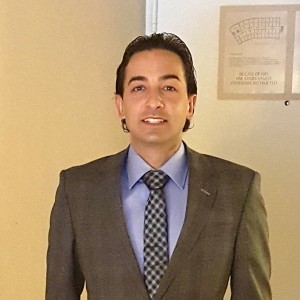RADLAB Seminar
Numerical Synthesis Algorithms and Antenna Designs for Next Generation Spaceborne Wind Scatterometer and CubeSat Antennas
Add to Google Calendar

Two novel aperture type antennas, both for next-generation space borne applications, are designed. The first is 3D printed, all-dielectric, inhomogeneous, shaped, low weight lens antenna designed to produce a conically scanned spinning spot beam. The electronic scan stems from a ring of feeds located along the ring focus designed into the azimuthally symmetric lens. The antenna is proposed for use in a space-borne scatterometer used to measure wind speeds upon the surface of the earth's oceans. The design requires the advent of a complex code hybridizing the Computational Electromagnetics method of curved-ray Geometrical Optics with the optimization strategy of Particle Swarm Optimization. This code and its mathematical formulations, the resultant designs, and the measurements validating the codes and obtained designs are presented in this dissertation. The lens antennas are fabricated via 3D printing techniques. The obtained designs are evaluated via near field measurements and compared to simulation results. Holographic back projection of the measured results are compared with the simulated near fields to validate the algorithms. Tolerance studies on 3D printing techniques and material characterizations are provided to illustrate the fabrication difficulties and our solutions for 3D printing the lenses accurately. A technique is also developed and presented which allows diagnostics of lenses printed with errors due to printing accuracies. The second is a new novel dual reflector Gregorian antenna system designed to meet the stringent requirements of the newly proposed CubeSat satellite paradigm by folding the optics into one of the most compact dual reflectors to date. The design combines a high gain flat reflectarray main aperture with an ellipsoidal subreflector fed by a patch array feed. The system is coplanar with the CubeSat chassis, deploying only the subreflector and thus has no moving cables or RF parts. This antenna design also requires a complex computer code to design. The code implemented to design the reflectarrays applies several novel acceleration strategies to the spectral domain method of moments algorithm in order to speed up the calculations. The theory and mathematical formulations behind this algorithm are also presented, as well as the resultant designs and measurements. The accelerated codes are used to design several Ka-Band reflectarrays. Measured and simulated results are provided.
Jordan Budhu received his Ph.D. E.E from the University of California Los Angeles (UCLA) in 2018 under the advisement of Professor Yahya Rahmat-Samii in the Antenna Research, Analysis, and Measurement (ARAM) Laboratory. He received his M.S.E.E. degree with Distinction in 2010 from California State University Northridge under the advisement of Professor Sembiam Rengarajan. In 2006, he won the first place award for his undergraduate senior project. In 2012, he won the Best Poster award at the IEEE Coastal Los Angeles Class-Tech Annual Meeting. In 2010, he was awarded the Eugene Cota-Robles Fellowship from UCLA. He was named a Teaching Fellow at UCLA 2018 after teaching over 7 quarters. In 2018, he was recognized by the department and awarded the Henry Samueli School of Engineering and Applied Science Excellence in Teaching Award at UCLA. Soon after, he was selected to be the Head EE Department TA at UCLA for the Fall 2018 quarter, a position selected to be awarded to a single candidate of nearly 100 TA's in the department. In 2019, he was selected as a finalist for the USNC-URSI Ernst K. Smith Student Paper Competition at the 2019 Boulder National Radio Science Meeting, of which he subsequently won the first place award for best paper. He was with NASA Jet Propulsion Laboratory in 2011 and 2012. He is now a postdoctoral research fellow with the University of Michigan in Professor Tony Grbic's Lab. He is also a member of both IEEE APS and the Bioelectromagnetics Societies.
 MENU
MENU 
